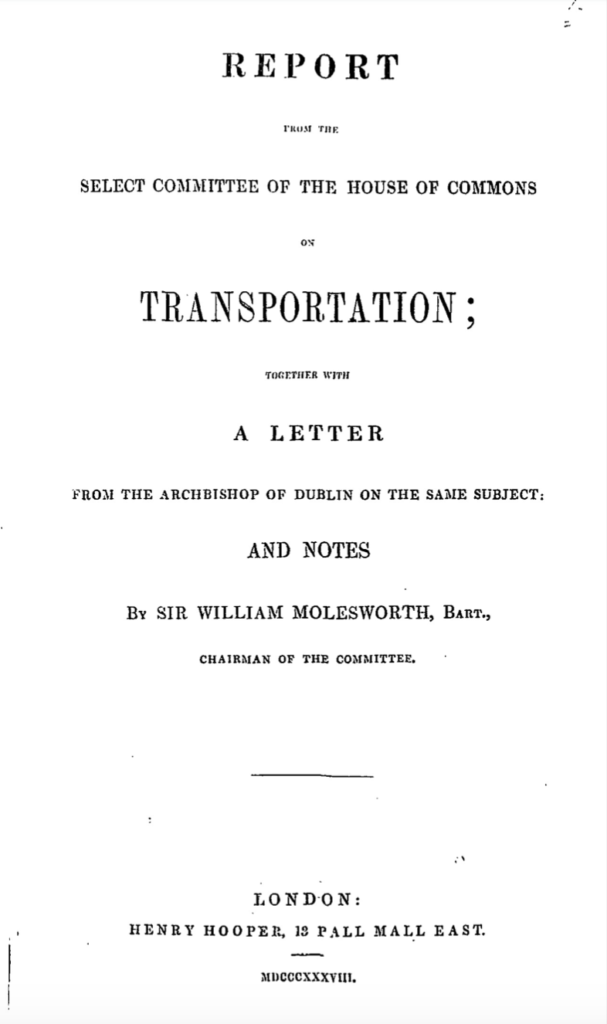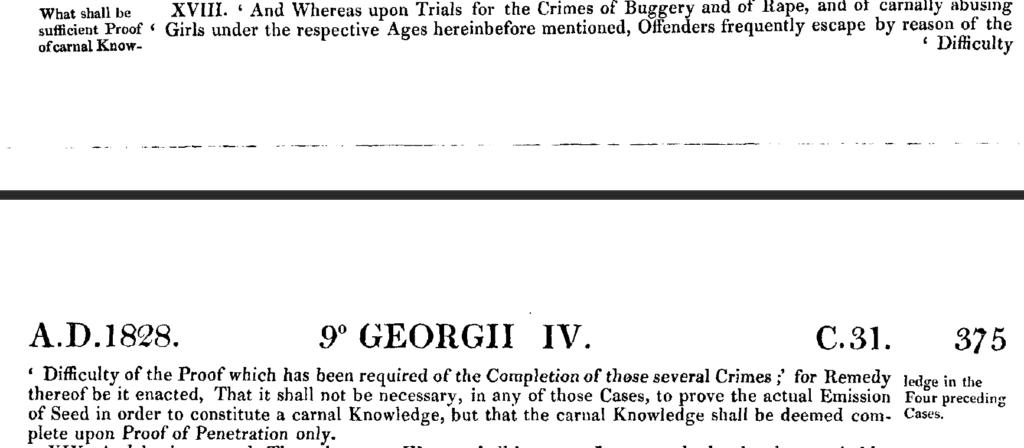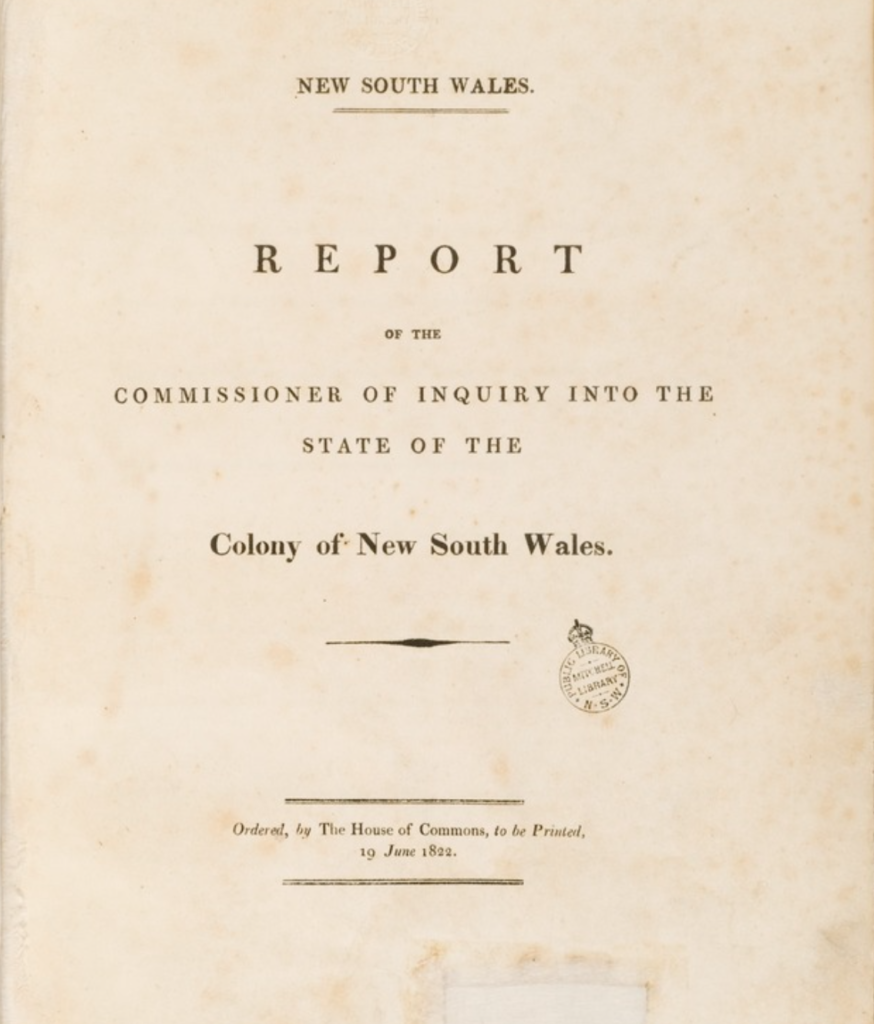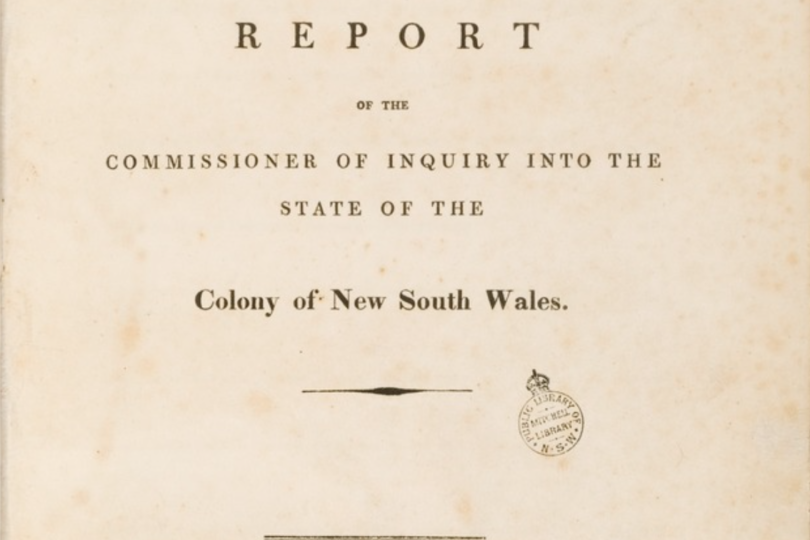I began researching the criminalization of same-sex intimacy in colonial New South Wales (NSW) while I was a doctoral student at the Faculty of Law, University of Toronto. My thesis actually concerned the legal construction of the family in England and, in the initial stages, Australia. I was interested in some of the legal moves that helped to constitute marriage as the primary relation within the emerging sphere of the (non-productive) family (i.e., the transition from a household-based conception of the family involving relations between masters and servants as well as those between husband and wife, to one premised on marriage and parent-child relations). Drawing on work by Randolph Trumbach and Jeffrey Weeks, I suspected that the criminalization of same-sex intimacy must have played a role in this process of elevating marriage to a sanctified social and legal position.[1] So, I decided to investigate rates of conviction in England and Australia to see if there were any noticeable trends.
I quickly discovered that much of the English ground had already been covered by Harry Cocks in his brilliant book, Nameless Offences, in which he showed that “[s]tarting in about 1780, increasing numbers of men were prosecuted for homosexual offences. This was a sustained increase that lasted throughout the nineteenth century, although the largest expansion in prosecutions took place between about 1780 and 1850.”[2] And so I turned my attention to Australia.
To my surprise and delight, I found the online archive Unfit for Publication,[3] which is a truly extraordinary repository of information concerning sex offences in colonial Australia, compiled and maintained by the Sydney-based gay rights activist Peter de Waal. I began trawling through the cases searching for those concerning charges against men for engaging in sexual conduct with other men. There were a lot, and I compiled enormous spreadsheets of data before realizing that there was simply far too much raw material to analyze for what was intended to be but one dimension of my thesis. I was also beginning to doubt the strength of a broad causal claim concerning charges against men for sex acts involving other men, and an emphasis on marriage as the core of family life. I still think it is likely that connections between these phenomena existed, but proving it seemed to necessitate detailed analysis of social attitudes as well as legal structures, which would have taken me far outside the scope of my thesis. At the same time, I wanted to do something with the material that I had gathered, and to make use of this wonderful archive. So, I decided to excise this material from my thesis and instead closely analyze the cases in the first 50 years of the colony, up to the publication of the Molesworth Report,[4] which portrayed NSW as a den of iniquity and formed the backdrop for the cessation of convict transportation to NSW.

I found that in the first 40 years of colonization, up to the passage of the Offences Against the Person Act 1828 (which dispensed with the common law requirement to prove ejaculation in order to secure a conviction for buggery and rape), there was an irregular pattern of charges and trials concerning buggery in the colony.

The decade between the Offences Act and the Molesworth Report, however, saw a marked increase in the number of men brought before the courts on sodomy charges: from a total of 14 charges between 1788-1828, to 34 charges in the decade from 1828-1838. (The charge rate for bestiality remained relatively constant.) When population size is taken into account, this reveals an increase in the annual average charge rate from 3.165 charges per 100,000 people in 1788–1828 to 5.87 charges per 100,000 people in 1828–38. To give a measure of comparative context, Harry Cocks’ work on English buggery committals (excluding bestiality) in the period from 1806 to 1828 revealed a rate between 0.2 and 0.9 charges per 100,000 persons. Equally striking was the reversal in the nature of the sodomy charges that were laid. Whereas eleven of fourteen charges in the earlier period were for attempt, only eight of thirty-four charges in the second period alleged attempt; that is, twenty-six of thirty-four charges were for the capital offense (and there was no mistaking that the offense was capital; the Offences Act specifically provided that persons convicted of “the abominable crime of Buggery … shall suffer Death”[5]).
Initially, it seemed to me that the post-1828 crackdown must have been principally linked to the introduction of the Offences Act. However, when I realized that the vast majority of cases were the result of community surveillance and complaints, I began to wonder if other forces were at play, because it seemed unlikely that there was widespread social awareness of the Act and the changes it had wrought. In this context, the increasingly repressive treatment of convicts in NSW in the 1820s and 1830s seemed particularly salient. A crucial turning point in this story is John Thomas Bigge’s 1822 Report into the State of the Colony in New South Wales,[6] which recommended intensified surveillance and subordination of convicts.

As David Roberts has shown, this crackdown was not met with passivity by convicts, and the cycle of repression and resistance appears to have generated acute social anxiety over convicts.[7] Bigge’s report also highlighted a longstanding issue within the colony: the imbalance in the sex ratio and the opportunities it created for social and sexual disorder. The British response was to institute measures to address the dearth of women, notably schemes to assist the immigration of single women to NSW.
The Bigge Report, the assisted immigration scheme, and criminal trials involving convicts were each the subject of extensive coverage in local newspapers – part of what Frank Bongiorno has described as “the sensational exposure of ‘social evil’ to parliamentary and public view.”[8] The result was an exacerbation of long-standing colonial anxieties over the sex ratio and unnatural sexual practices. By the 1830s, “sodomy was coming to stand for the unnaturalness of convict transportation as a system of punishment,” and panic over its prevalence “was especially tied up with the threat it posed to the model of respectable family life” that was finally penetrating the lower orders of NSW society.[9] So, I suggest in the article that it was this confluence of socio-legal factors that generated the rise in charges between 1828-38. At the same time, I think the Offences Act played a more central role in the changing form of the charges post-1828. With the Act’s removal of the requirement to prove emission, it became possible to charge men with committing buggery in situations where previously only a charge of attempt might have stuck.
One aspect of the cases that I found
particularly surprising was just how forthright witnesses were in their
testimony. Despite the mantra repeated in cases that buggery was a sin “not to
be named among Christians,”[10]
and an unusual degree of reticence in popular reports of buggery cases (the
euphemisms “unnatural” and “nameless” signifying the horrors of buggery),
witnesses were by no means circumspect in their evidence of sex between men. Indeed,
far from being “unspeakable,” the evidentiary requirements for a buggery
conviction meant that the various acts were in many cases the subject of
detailed description. The buggery trial was, in Michel Foucault’s terms, “an
apparatus for producing an ever greater quantity of discourse about sex.”[11]
[1] See Randolph Trumbach, The Rise of the Egalitarian Family: Aristocratic Kinship and Domestic Relations in Eighteenth-Century England (NY: Academic Press, 1978), 291; Randolph Trumbach, “Modern Sodomy: The Origins of Homosexuality, 1700-1800” in Matt Cook et al. (eds.), A Gay History of Britain: Love and Sex Between Men Since the Middle Ages (Oxford/Westport, CT: Greenwood World Publishing, 2007), 77, 78; Jeffrey Weeks, Sex, Politics and Society: The Regulation of Sexuality Since 1800 (London: Longman, 1981), 32.
[2] H.G. Cocks, Nameless Offences. Homosexual Desire in the Nineteenth Century (London: J.B. Tauris & Co. Ltd., 2010), 7-8.
[3] Unfit for Publication, http://www.unfitforpublication.org.au (accessed February 15, 2020).
[4] Report from the Select Committee on Transportation; Together with the Minutes of Evidence, Appendix, and Index (London: House of Commons, 1838).
[5] Offences Act, 9 Geo. IV, c.31, s.15.
[6] Report of the Commissioner of Inquiry into the State of the Colony of New South Wales (London: House of Commons, June 19, 1822).
[7] David Andrew Roberts, “A ‘Change of Place’: Illegal Movement on the Bathurst Frontier, 1822-25,” Journal of Australian Colonial History 7 (2005): 97–122, at 98.
[8] Frank Bongiorno, The Sex Lives of Australians (Collingwood: Black Inc., 2012), 16.
[9] Ibid at 20. On the wholesale adoption of bourgeois familial ideals in NSW in the 1840s see Anne Summers, Damned Whores and God’s Police. The Colonisation of Women in Australia (Sydney: NewSouth Publishing, 2016 [originally published in 1975]), 431-32.
[10] William Blackstone, whose Commentaries of the Laws of England were extremely influential in colonial NSW (see Bruce Kercher, An Unruly Child: A History of Law in Australia [Sydney: Allen & Unwin, 1995], xii), noted “the delicacy of our English law” with respect to this “offence of so dark a nature”, treating it “in it’s [sic] very indictments, as a crime not fit to be named.” William Blackstone, Commentaries on the Laws of England, 4 Vols., 4th ed. (Oxford: Clarendon Press, 1770), IV:215–16.
[11] Michel Foucault, The History of Sexuality. The Will to Knowledge. Volume I, trans. Robert Hurley (Camberwell: Penguin, 2008), 23.


